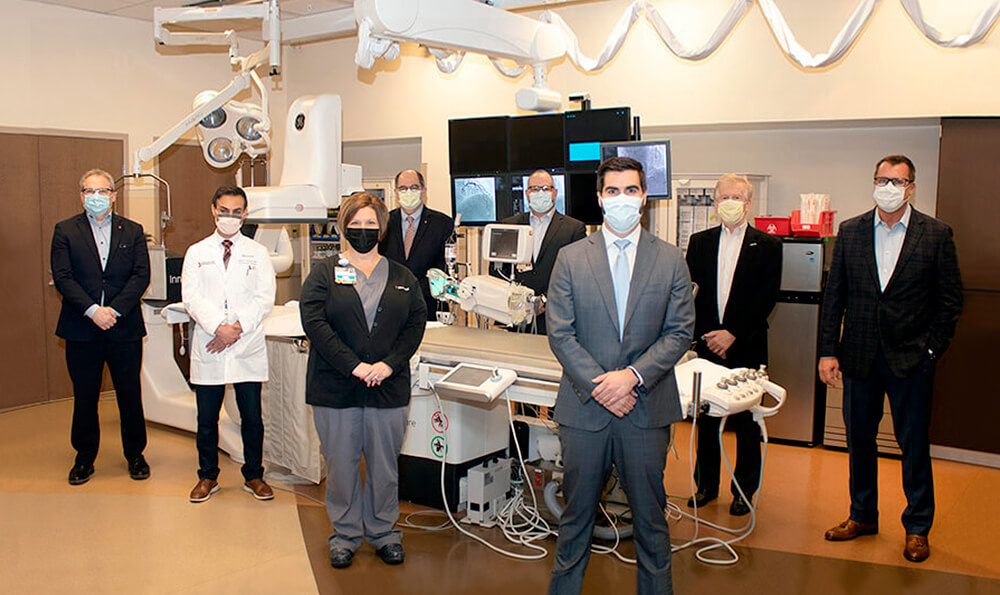Health & Wellness

Pictured, back row, left to right:
• Andrew Thomas, MD, MBA, FACP, Interim Co-Leader and Chief Clinical Officer of The Ohio State University Wexner Medical Center and Senior Associate Vice President for Health Sciences at The Ohio State University;
• Spence Fisher, Executive Vice President, Memorial Health and President, Memorial Medical Group;
• Thomas Ryan, MD, MBA, Ohio State Heart and Vascular Center Director and John G. and Jeanne Bonnet McCoy Chair in Cardiovascular Medicine; and
• Chip Hubbs, President/CEO, Memorial Health.
Pictured, front row, left to right:
• Tom Blincoe, Executive Director of Outreach and Engagement and the Ohio State Health Network;
• Umair Ahmad, MD, FACC, FSCAI, Ohio State Interventional Cardiologist;
• Tricia Daniels, RN, BSN, CCRN, Director of Memorial Cardiovascular Services; and
• Jason Russell, DO, Chief Medical Officer, Memorial Health.
Leaders from Memorial Health and The Ohio State University Wexner Medical Center joined this week to emphasize the importance of February as Heart Health Month. Heart disease is the leading cause of death in the United States, with the American Heart Association estimating that every 40 seconds a loved one has a heart attack or stroke.
Focus was also on the recent opening of the Level II Cardiac Catheterization Lab at Memorial Hospital.
The new heart care program offers emergent and interventional solutions, including balloon angioplasty and stent placement for blocked coronary arteries, services never before available in the area. Patients now have access to emergency heart care, with an interventional cardiologist and cardiac team available 24 hours a day, seven days a week.
These advancements are a part of The Heart Partnership, formed between Memorial and Ohio State in 2009, to bring exceptional heart and vascular care to surrounding communities.
To find a cardiologist or to learn about the advancements in heart care, visit memorialohio.com.
Symptoms of a heart attack can include pressure; tightness; fullness; squeezing, pain, or discomfort in the center of the chest that lasts for minutes and can radiate to the shoulders, neck, arms, and jaw; chest pain that increases in intensity or is not relieved by rest; chest pain that occurs with sweating; fainting. Additional symptoms may include indigestion, nausea, or vomiting; unexplained weakness or fatigue; cool, clammy skin; paleness; shortness of breath; dizziness; and a rapid or irregular pulse. Symptoms can be vague and nonspecific, particularly in women, the elderly, and people who have diabetes. If you experience any of these symptoms, call 911 immediately.



